Bisector
A bisector is a line, ray, or segment that divides an angle or a line segment into two equal parts. There are three main types of bisectors: angle bisectors, perpendicular bisectors, and median bisectors. Each type of bisector has its own specific properties and applications.
Angle Bisector
An angle bisector is a line that divides an angle into two equal angles. The angle bisector theorem states that the angle bisector of an angle in a triangle divides the opposite side in the same ratio as the other two sides. This theorem can be used to solve for unknown side lengths or angle measures in a triangle.
Perpendicular Bisector
A perpendicular bisector is a line that is perpendicular to a line segment and passes through its midpoint. The perpendicular bisector theorem states that any point on the perpendicular bisector is equidistant from the endpoints of the line segment. This theorem is commonly used in geometry and construction to create right angles and bisect line segments.
Median Bisector
A median bisector is a line that passes through the midpoint of a line segment and is perpendicular to it. In a triangle, the three median bisectors intersect at a single point called the centroid. The centroid divides each median into a 2:1 ratio, where the longer segment is closer to the vertex of the triangle. This property is useful in understanding the center of mass of a triangle.
Study Guide
To study bisectors effectively, consider the following steps:
- Understand the definitions and properties of angle bisectors, perpendicular bisectors, and median bisectors.
- Practice identifying and drawing bisectors in various geometric figures.
- Work through examples and problems involving the angle bisector theorem, perpendicular bisector theorem, and centroid in triangles.
- Explore real-world applications of bisectors, such as in architecture, engineering, and design.
- Review and master the use of bisectors in geometric constructions and proofs.
By following this study guide, you can gain a solid understanding of bisectors and their significance in geometry and beyond.
.◂Math Worksheets and Study Guides Seventh Grade. Exponents, Factors and Fractions

 Worksheet/Answer key
Worksheet/Answer key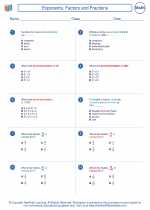
 Worksheet/Answer key
Worksheet/Answer key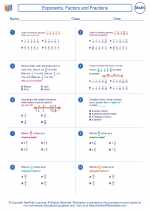
 Worksheet/Answer key
Worksheet/Answer key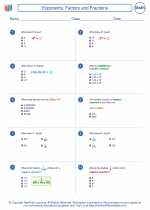
 Worksheet/Answer key
Worksheet/Answer key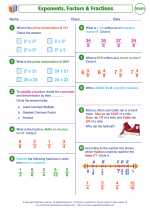
 Worksheet/Answer key
Worksheet/Answer key
 Worksheet/Answer key
Worksheet/Answer key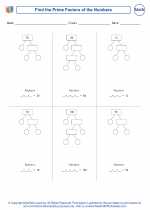
 Worksheet/Answer key
Worksheet/Answer key
 Worksheet/Answer key
Worksheet/Answer key
